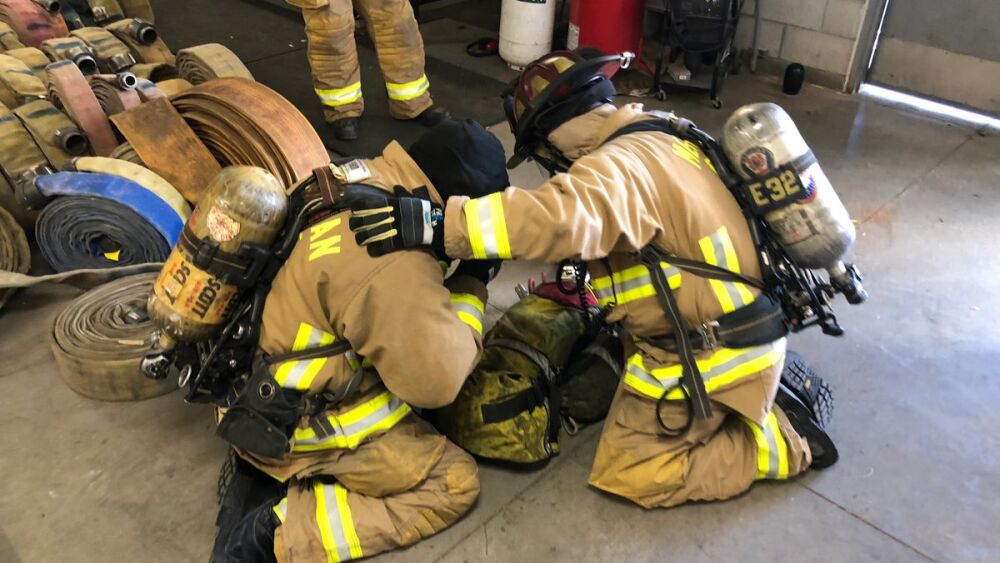Years ago, I remember several of my EMS instructors rhetorically asking, “If a patient says, ‘I can’t breathe,’ what are they doing?” In unison, me and classmates would mindlessly respond, “breathing.” A mini-lecture would soon follow about a shady character trying to con his way out of a trip to jail by complaining, “I can’t breathe.”
Regretfully, I am sure I used the same rhetorical question and mini-lecture to students I taught without critically applying the experience I gained in the field assessing and treating respiratory distress patients, not to mention countless in-custody deaths that involved a suspect uttering, “I can’t breathe.” To those students and the patients they cared for, I am sorry.
Peyton Morse, 21, was a firefighter recruit in training at the New York State Academy of Fire Science. During an SCBA evolution, Morse complained, “Help me. I can’t breathe” to his instructors. His calls for help reportedly went unheeded until he was unresponsive. His death is now the subject of an investigation, and this interview with his parents is gutting to read.
Morse was a healthy young man who had been a high school athlete and dreamed of becoming a firefighter and serving his community. Instructors were alleged to be nearby when he died.
Our dismissal of “I can’t breathe” is so ingrained in public safety culture that we might have let one of our own die in a training exercise. How did we lose our way?
What “I can’t breathe” really means
We need to hear “I can’t breathe” in a new way.
Start your redefinition by remembering that the brain is highly sensitive to hypoxia. One of the earliest signs of hypoxia is a change in mental status. Initially the patient – or in the case of Morse, the student – is A on the AVPU level of consciousness scale with altered mental status. It is common for patients in respiratory distress, regardless of the cause, to be:
- Awake and scared
- Awake and agitated
- Awake and combative
- Awake and confused
We should not expect a patient in respiratory distress to carefully and thoughtfully choose words to describe their distress, even knowing to call a mayday. Instead of skeptically dismissing these words, “I can’t breathe”, I want us to hear what the patient is really trying to say:
- I need help! NOW!
- I am scared that I might die. Help me, please.
- I am fighting for my life, and I am going to keep fighting against your efforts to restrain me or not take my complaints seriously because I am dying.
- I might die soon because my brain, heart, and lungs are not getting enough oxygen.
- Will you do something to save me?
Assess the cause of “I can’t breathe”
If we are willing to accept that “I can’t breathe” is the verbalization of altered mental status from hypoxia, the next step is to understand what is causing the patient’s altered mental status. AEIOU-TIPS, a commonly taught acronym for assessing altered mental status, or SNOT, an acronym proposed by paramedic Kevin Grange, both encourage EMTs and paramedics to consider oxygen deficiency as a cause of altered mental status. Specifically, the patient may be experiencing hypoxia because of illness or injury that is:
- Impairing mechanical ventilation, making it difficult to move air in and out of the lungs.
- Reducing the volume of air the patient is able to exchange with each breath.
- Preventing oxygen and carbon dioxide exchange in the alveoli.
Regardless of the cause of hypoxia, “I can’t breathe” isn’t a statement to dispute or ignore. Instead, it is a trigger for us to conduct a scene size-up, primary assessment and secondary exam.
- Is the environment safe for the patient? Are they being restrained, positioned or handled in a way that is increasing their oxygen demand, impairing their ability to ventilate, and worsening their fear?
- If the next thing you hear or see after “I can’t breathe” is infrequent, nearly silent air gulping or agonal respirations, what are you waiting for? Begin BLS care, chest compressions, ventilations and defibrillation, immediately with the tools and training in your scope of practice.
- If the patient is awake with altered mental status, continue the focused history and physical exam to determine the cause of their altered mental status. What is their SAMPLE history? What are their vital signs? What is the trend of their vital signs? Is their mental status staying the same or worsening? Are they progressing from A to V, P or U?
“I can’t breathe” treatment
Case after case of mistreatment for “I can’t breathe” shows the top two actions by rescuers need to be:
- Take the complaint seriously. Translate “I can’t breathe” to “I need your help. Will you please help me?”
- Honor your duty to the patient. As an EMS provider, the person becomes a patient when you determine they need your help.
Regarding our duty to a patient, Doug Wolfberg and Steve Wirth explained in their legal analysis of the Elijah McClain investigation, “EMS providers have a duty of care to a patient. They must act as patient advocates, regardless of how exactly that person came to be a patient.”
You don’t need to wait until you encounter a patient in respiratory distress to adopt those two treatments. Shift your mindset today so you are ready to be a caregiver the next time you encounter an “I can’t breathe” patient who is surrounded by uncaring skeptics.
Mayday!
I grieve the premature death of Peyton Morse and can only imagine the loss his parents, family and friends are feeling. I think it is unreasonable and unfair to expect a hypoxic firefighter-in-training to call for a mayday when his life was on the line. It saddens me to think that if he had said “Mayday! Firefighter in distress” instead of “I can’t breathe,” the response might have been different and Morse might be alive today serving his community as a firefighter.













